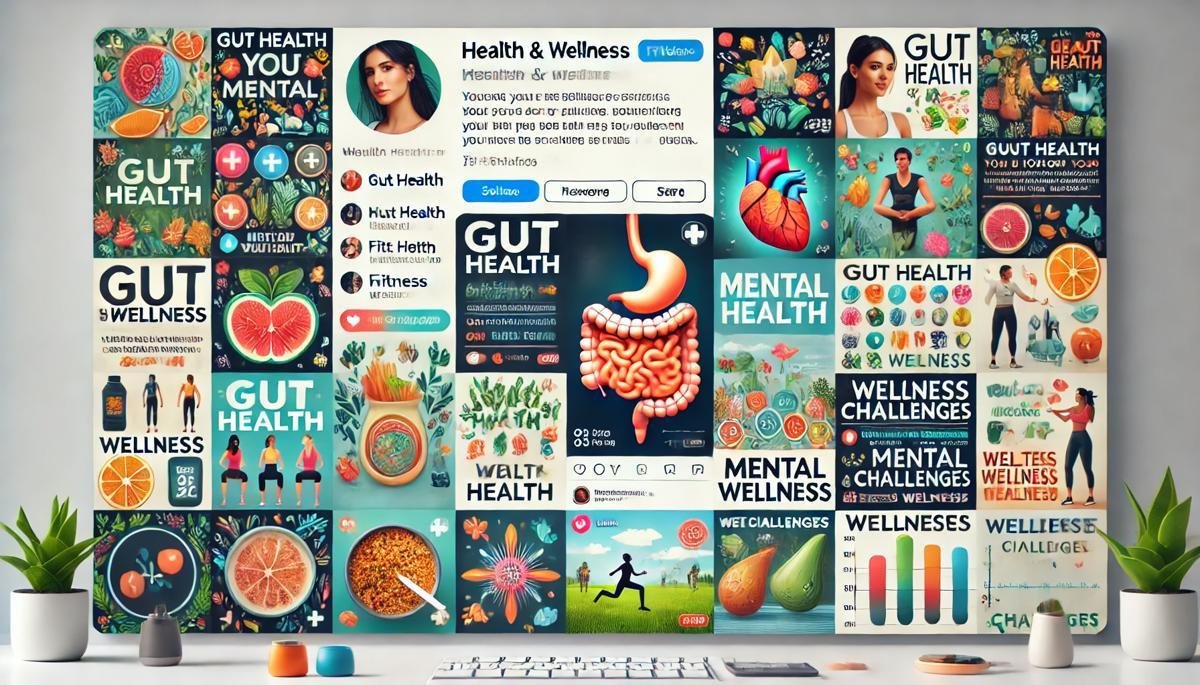The health and wellness industry has never been more competitive, with brands vying for attention in a crowded digital space. To stand out, it’s essential to not only post regularly but also provide valuable, targeted content that resonates with an audience’s desire for better health. Effective social media strategies can help you build credibility, connect with your audience, and create an engaged community. In this article, we’ll explore ten strategies that health and wellness brands can implement to elevate their social media presence and truly make an impact in people’s lives.
- 1. Understand Your Target Audience: Speak to Their Wellness Goals
One of the first steps in crafting an effective social media strategy is understanding who you’re trying to reach. For health and wellness brands, this means delving into the specific wellness goals and concerns of your audience. Are they looking for ways to improve gut health, reduce stress, or maintain a balanced diet? Tailoring your content to address these specific interests will increase engagement, as followers see you as a relevant source of information that speaks directly to their needs. Conduct audience research, use social media insights, and create audience personas to help fine-tune your content approach.
- 2. Share Educational Content on Health Topics, Like Gut Health
Education is a powerful tool in the health industry, and audiences appreciate brands that provide informative content they can use to improve their lives. Use your social media channels to share tips, facts, and science-backed information about health topics, such as gut health, mental wellness, or fitness. This positions your brand as a knowledgeable authority while also providing followers with valuable insights they may not find elsewhere. Remember to keep your posts easy to understand and visually engaging, breaking down complex topics into digestible content that appeals to everyone.
- 3. Use Visual Content to Explain Complex Health Concepts
Many health topics can be complex, making visual aids essential for communicating effectively. Infographics, diagrams, and animated videos are fantastic tools for explaining intricate concepts in a simple way. For example, you can create a series of graphics that illustrate the effects of various foods on gut health or showcase a step-by-step process for practicing mindfulness. High-quality visuals not only make your content more engaging but also increase shareability, helping your message reach a wider audience.
- 4. Promote Interactive Content: Quizzes and Polls on Wellness Habits
Interactive content allows your followers to engage with your brand in a way that feels fun and informative. Quizzes about nutrition, sleep habits, or exercise routines can spark curiosity and encourage people to think about their own wellness practices. Polls are another great tool to get a quick pulse on your audience’s interests, asking questions like, “Which area of health are you focusing on this month?” Interactive posts keep your followers engaged and can provide you with helpful insights into what content resonates most.
- 5. Build Trust Through User-Generated Content and Testimonials
Social proof is crucial in the wellness industry, where credibility can make or break a brand. Sharing testimonials, success stories, and user-generated content can provide that trust factor, showing that real people benefit from what you offer. Encourage your followers to share their own wellness journeys or experiences with your products, tagging your brand in their posts. Reposting these testimonials adds authenticity to your content and fosters a community feel, encouraging others to get involved and share their stories as well.
- 6. Collaborate with Health Experts for Credibility and Reach
Partnering with health professionals, such as dietitians, nutritionists, or fitness trainers, can enhance your brand’s credibility. When experts vouch for your content or contribute to it, followers are more likely to trust the information. Collaborations can be as simple as guest posts, live Q&As, or short video interviews on topics relevant to your brand. Expert collaborations also help you reach a broader audience, as they typically bring along their own followers, many of whom will likely be interested in your content as well.
- 7. Create Series-Based Content: Tips for Ongoing Health Improvements
Content series—such as weekly wellness tips or monthly health challenges—create anticipation and encourage your audience to return to your profile. Series-based content is a fantastic way to keep followers engaged over time while providing structured, continuous value. For instance, you could launch a “30 Days to Better Gut Health” series with daily tips, recipes, or lifestyle adjustments that followers can try out. This type of content keeps your brand top-of-mind and encourages consistent engagement from your audience.
- 8. Encourage Community Engagement with Health Challenges
Hosting wellness challenges is a fantastic way to build community around your brand. Challenges focused on specific health areas, such as a “Hydration Challenge” or “Mindfulness Month,” inspire followers to make positive changes while connecting with others. Encourage participants to share their progress and tag your brand, fostering a sense of accountability and community. A well-executed challenge can lead to a wave of user-generated content and bolster a sense of belonging among your followers.
- 9. Track and Optimize Your Health-Focused Content’s Performance
As with any social media strategy, tracking your content’s performance is essential to understanding what resonates with your audience. Use analytics tools to measure engagement rates, click-throughs, and audience growth across various content types. By identifying high-performing posts, you can adjust your strategy to prioritize the topics and formats that get the most traction. Consistently analyzing and refining your content ensures that your social media efforts are aligned with your audience’s interests, helping you deliver even more impactful and relevant content over time.
- Conclusion
Building a strong social media presence for a health and wellness brand requires more than just eye-catching visuals; it’s about fostering trust, educating your audience, and encouraging engagement in meaningful ways. By implementing these strategies, brands can create an online community that not only shares their interest in wellness topics, like gut health, but also looks to them as a trusted source of health knowledge and motivation. Use these tactics to build connections, add value, and ultimately grow a loyal following that’s invested in both your brand and their own wellness journey.











